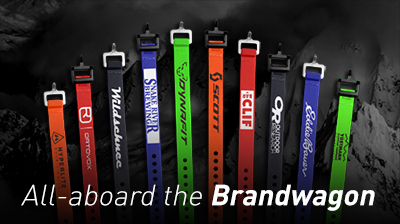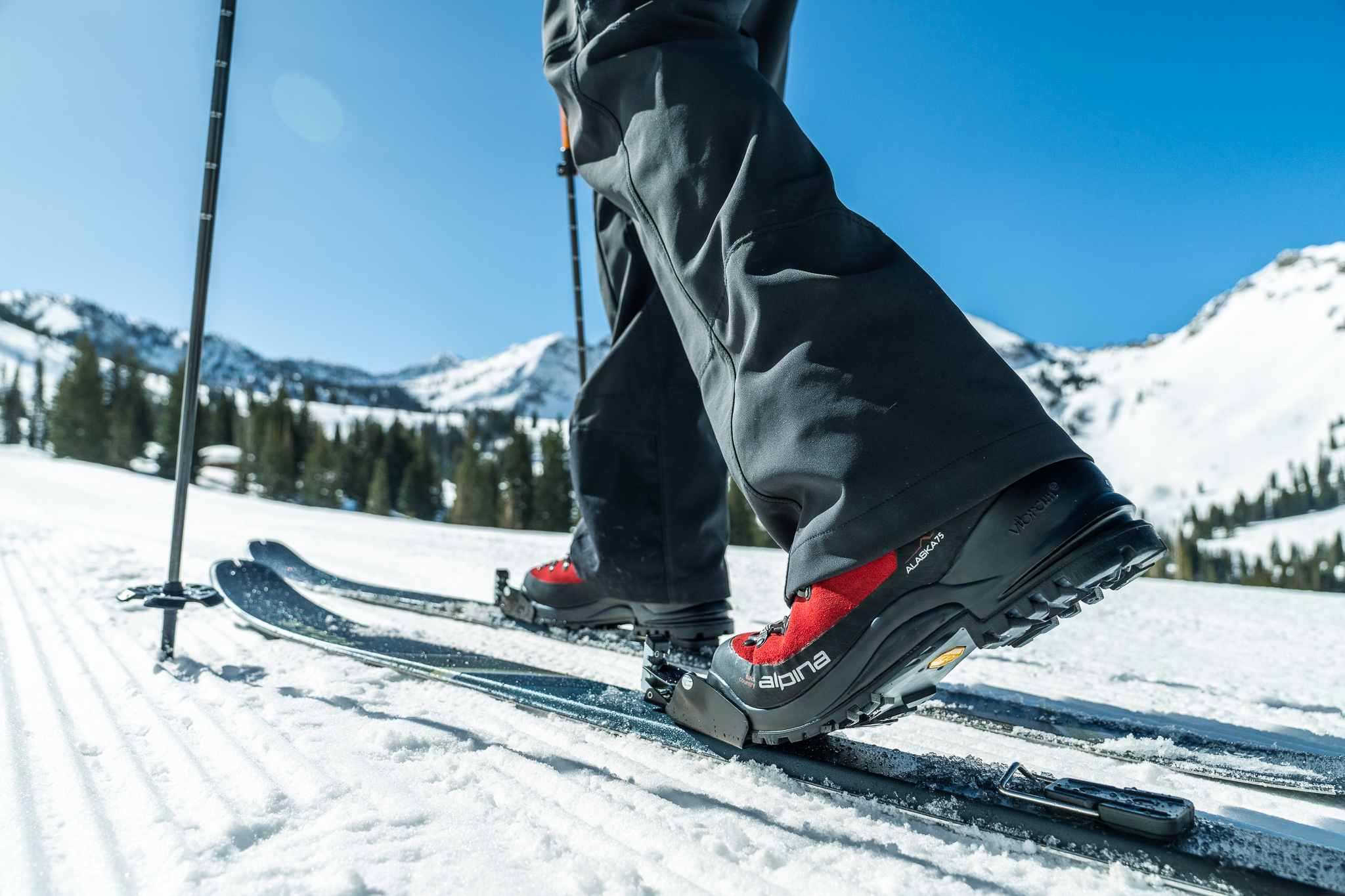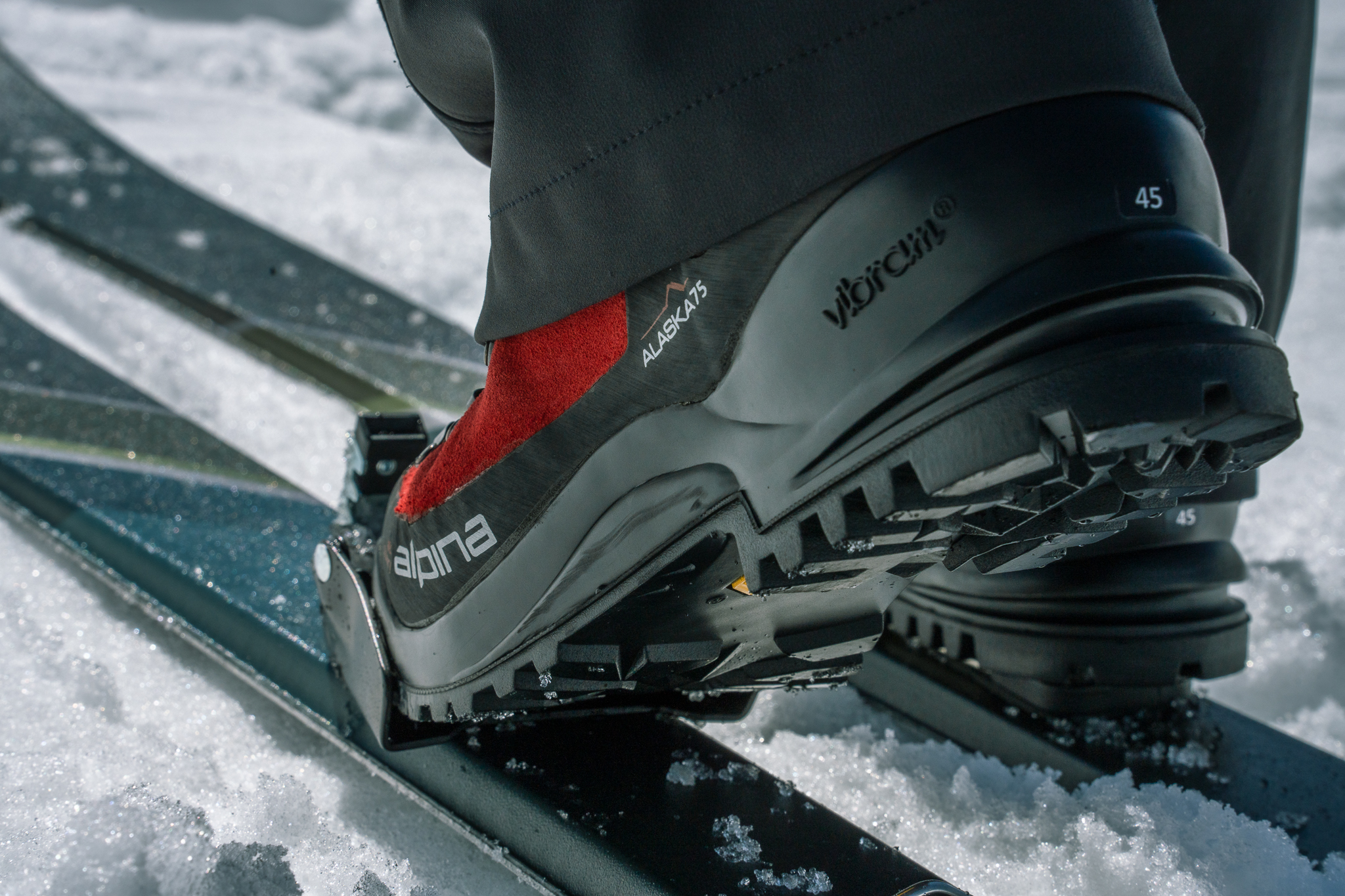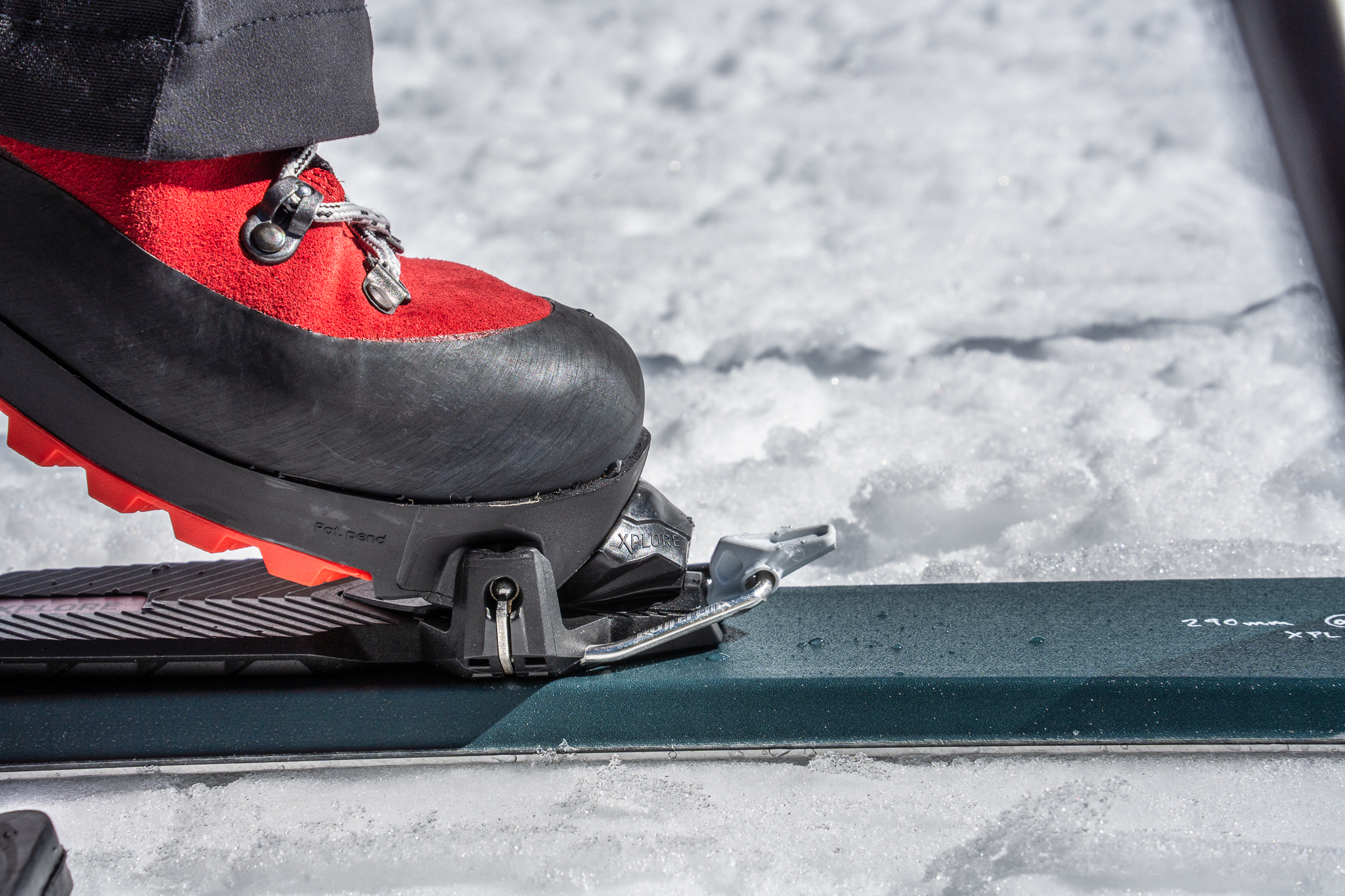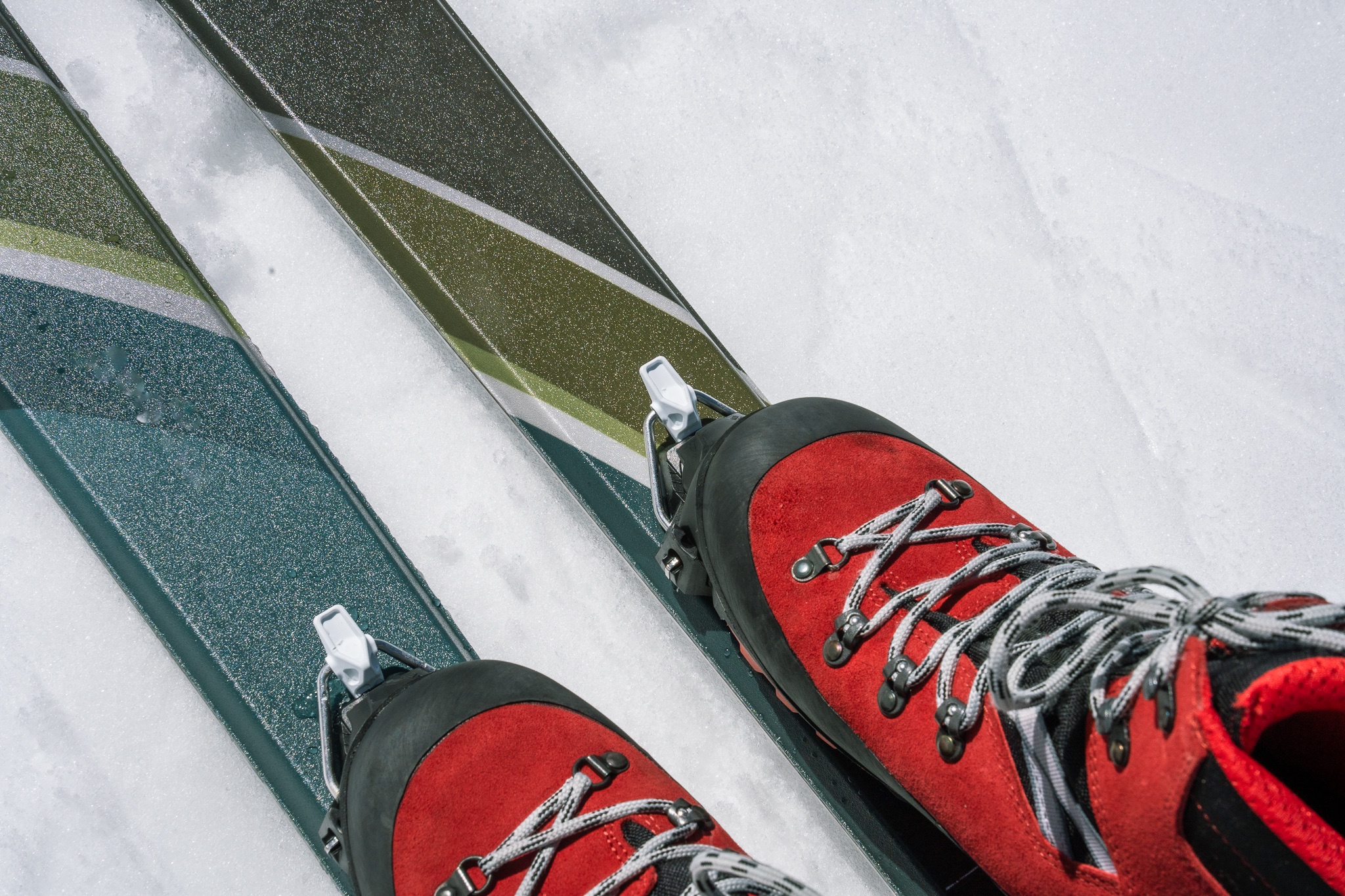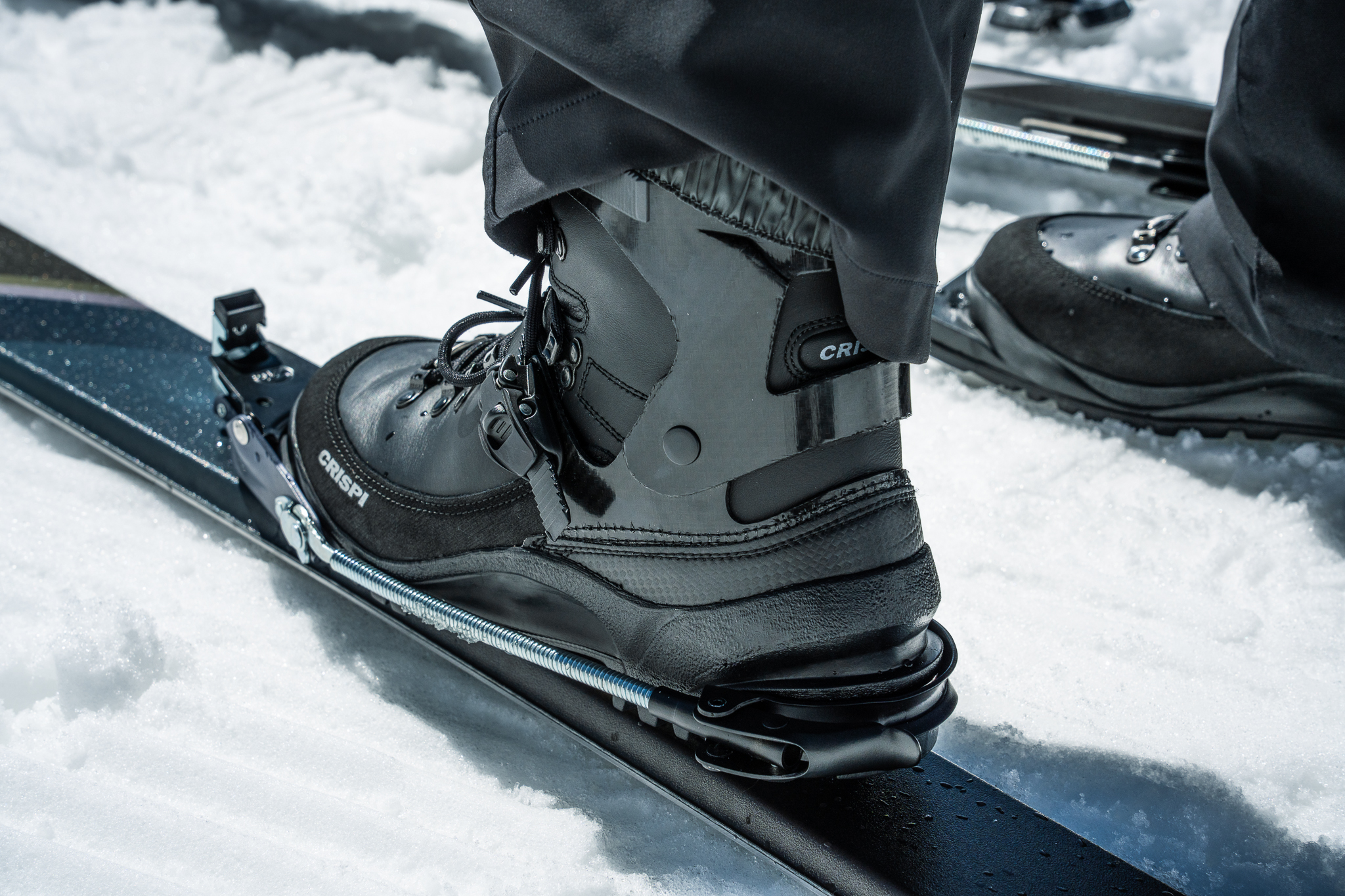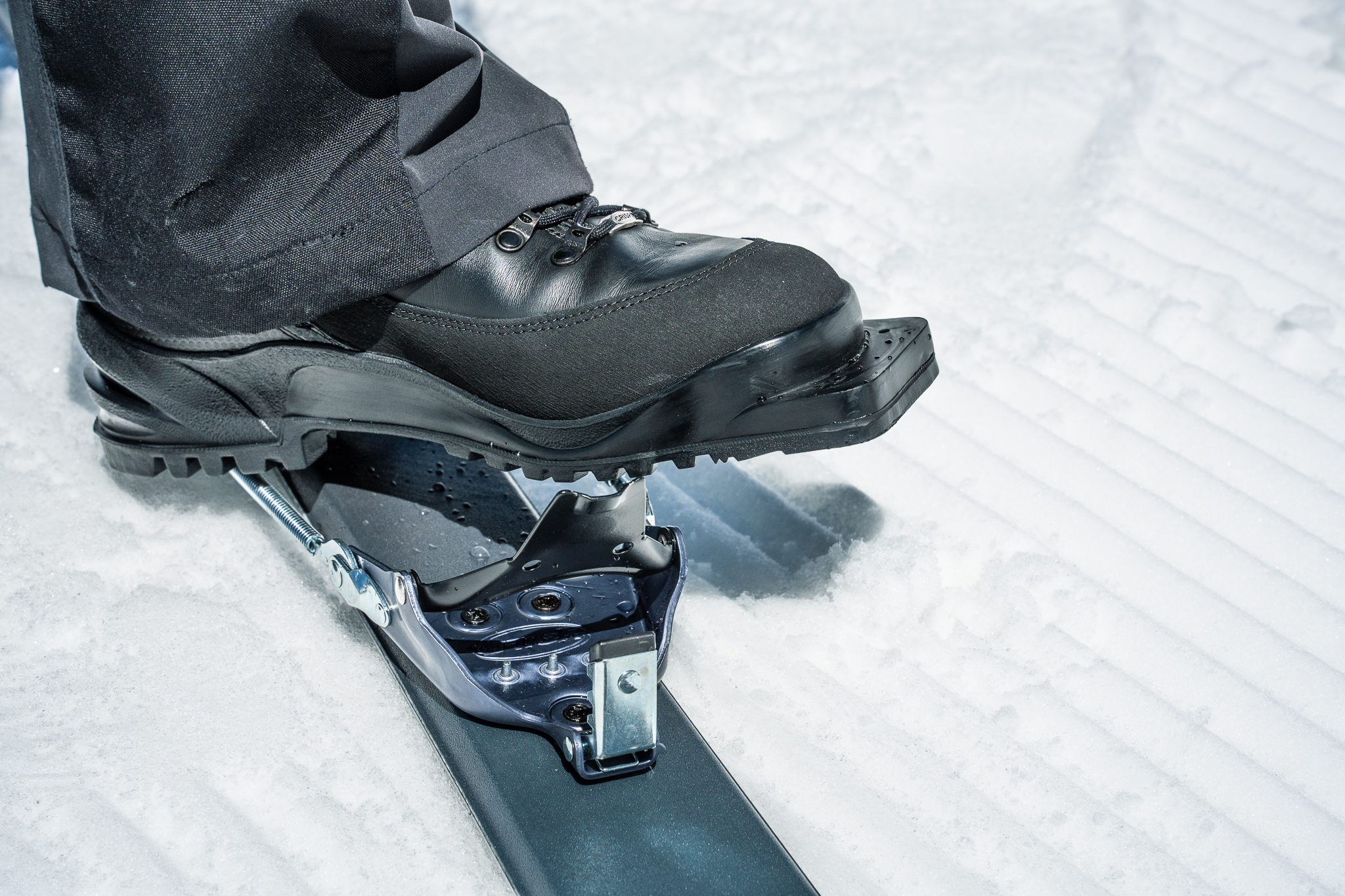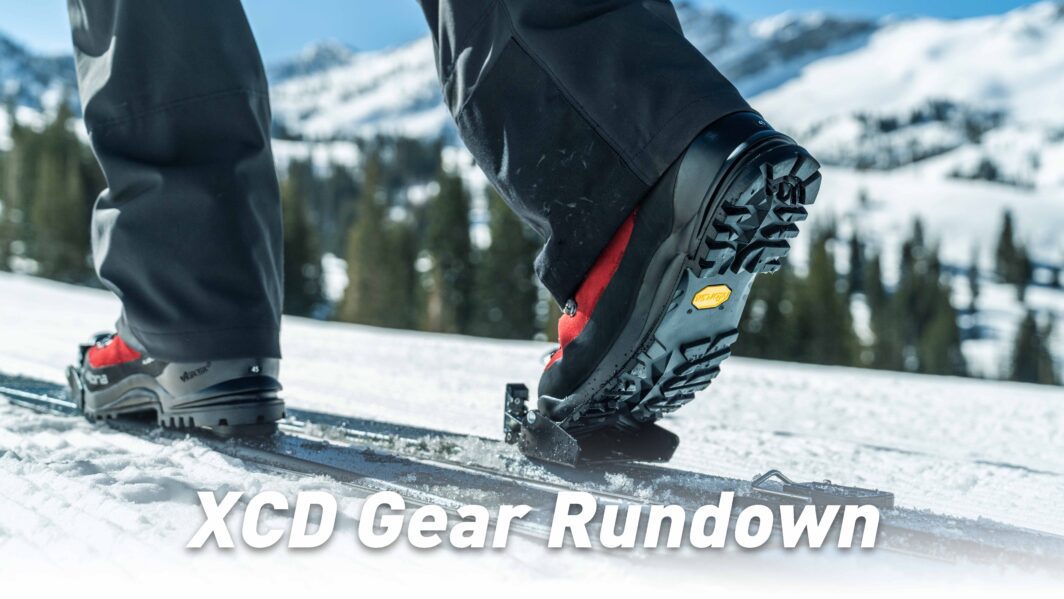
XCD Gear Rundown
Share this Post
Today we’re going to take a look at a few XCD binding and boot options paired with Voile Endeavor BC skis to find out which setup is going to be right for you. We have the classic Voile 201 Tele 3-Pin binding, Rottefella Xplore Backcountry binding, and Voile 3-Pin Cable Telemark Binding paired with Alpina Alaska 75, Alaska XP, and Crispi Svartisen 75 boots. You can watch the two videos here, or continue reading for our full XCD Gear Rundown.
Rottefella Xplore, Voile Tele 3-Pin, and Alpina Alaska Boots
3-Pin Cable Binding and Crispi Svartisen 75 Boot
The Bindings
Voile 201 Tele 3-Pin
After being absent from the Voilé line for several years we brought back the 201 Tele 3-pin to provide a better mate with thinner duckbill (around 15mm) tele boots like the Alaska 75. The Tele 3-Pin has a lower bail height to clamp the duckbill more securely. It’s as simple as a telemark binding can get. A 75mm Nordic Norm toe piece that mounts directly to the ski with a barebones heel pad.
After testing it side by side with the Rottefella Xplore, we’d say this binding is a tad more confidence-inspiring on the descent. That said, the boots that pair with this binding (Alpina Alaska 75) are a bit heavier than the Alaska XP version that mates with the Xplore. Weight and downhill merits aside, this binding makes itself a pretty compelling option with its $80 price tag.
Rottefella Xplore
The Rottefella Xplore has proven itself to be an excellent XCD binding with its low weight, swappable flexors, and smooth pin-touring feel. Coming in at 378g (roughly 8 grams lighter than the 201 3-pin), the Xplore is plenty light for any outing you might have in mind. When paired with the Alpina Alaska XP boots, you get an incredibly smooth setup. Another perk is the swappable front flexors. This allows you to choose between a softer feeling “standard” flexor and a more downhill-oriented “stiff” flexor.
Upon testing this binding next to the 201 3-Pin, we can say what truly stands out here is the pin-touring feel and efficiency. The range of motion is incredible with the soft flexors and it’s very easy to swap them out in the field. This can come in handy if you want to throw in the stiffer flexors for any descents. And while the $250 price tag is a bit more than the 201 3-Pin, we still think that’s an incredible price point for what you get with this binding.
Voile 3-Pin Cable
The 3-Pin Cable Binding stands out in this comparison as the choice catered to the XCD skier who wants a bit more downhill capability. This is the heaviest binding in this class (822g) by a longshot, but, when you remove the cables for the ascent, the binding weight ends up close to that of the 201 Tele 3-Pin.
This binding paired with the Crispi Svartisen boot is incredibly versatile since you can use it for XCD skiing, or for standard ski tours that require a bit more downhill stability. There’s more of a fiddle factor here since you have cables to remove/attach when transitioning, but what you get in return is that downhill performance. As for price, the $145 price tag sits firmly in between the other two setups making it a setup worth considering for the XCD curious, or those who want a binding that better supports a proper tele turn.
The Boots
Alpina Alaska (and Alaska 75)
The Alpina Alaska XP and Alaska 75 are nearly identical boots with the primary difference being the duckbill on the 75 and the pins on the XP. Because of this difference in the toe of the boot, the XP comes in at 1688g per pair (size 45) compared to the 2412g Alaska 75 (size 45). These boots have 102mm last, making them quite comfortable, and they have a nice soft flex. We’ll also be carrying both of these boots online and in our retail store this Fall.
Crispi Svartisen 75
The Crispi Svartisen 75 boot is similar in terms of comfort compared to the Alpina Alaska boots, but has a few features that make it feel a bit more snug and stiffer. This is still a “soft” leather boot but it can hang on steeper slopes. Two ratchet buckles on this boot lock your heel into place and the carbon cuff adds some stiffness for edge support while skiing. Weight-wise, it’s incredibly close to the Alaska 75 boot so that shouldn’t factor into your decision-making too much. It is about $40 USD more expensive (coming in at $370) but that extra dough is what affords you the carbon cuff and ratchet buckles. We’ll be carrying this boot online and in our retail store this Fall.
The Skis
Voile Endeavor BC
We chose the Endeavor BC as the ski for this XCD Gear Rundown for a few reasons. Its low-80mm waist and wide shovel allow it to stay on top in deep snow. The traction pattern base allows you to navigate backcountry terrain without the need for climbing skins up to roughly 20 degrees (conditions dependant). We believe these skis paired with an XCD binding make for the ultimate “adventure ski”, ready to tackle any terrain or snow conditions you may encounter.
Which Is Right For You?
While there are plenty of factors that go into this decision, we think that any of these pairings could work for a fitness, adventure, or XCD skier. If you’re more concerned with having stability during descents, you might want to try the 3-pin cable and Crispi route. If you’re prioritizing walking efficiency, you might want to go with the Xplore setup due to the weight savings and pin-touring feel. Now, let’s say you lie somewhere in the middle, perhaps the 201 Tele 3-Pin with the Alaska 75 is perfect for you.
Either way, we think you’ll have plenty of fun exploring the backcountry on either of these setups. Thanks for tuning into the XCD gear rundown. 🙂
Full XCD Gear Rundown Chart
| 201 Tele 3-Pin Binding | Alpina Alaska 75 Boot | Boot + Binding Total | Rottefella Xplore Binding | Alpina Alaska XP Boot | Boot + Binding Total | 3-Pin Cable Binding | Crispi Svartisen 75 Boot | Boot + Binding Total | |
| Weight | 378g | 2412g (size 45 pair) | 2,790g | 370g | 1688g (size 45 pair) | 2,058g | 822g | 2,218g (size 44 pair) | 3,040g |
| Price (USD) | $80 | $330 | $410 | $250 | $430 | $680 | $145 | $370 | $515 |
Share this Post



